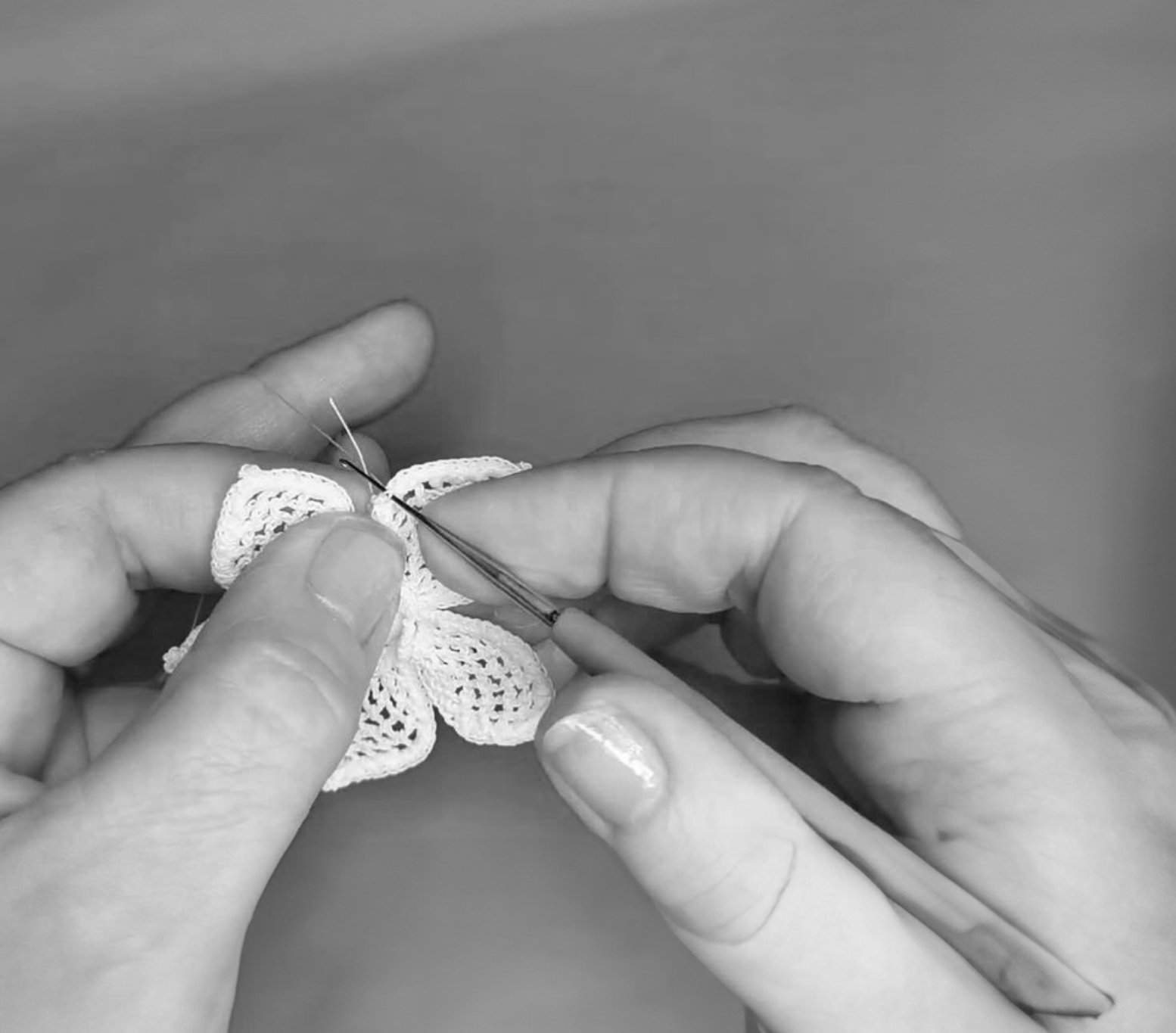
Materials
Olwen Bourke’s designs are created with an ‘earth-friendly’ approach. Passionate about traditional hand-crafts, she collaborates with lace-makers to create bespoke lace embellishments, exclusively for her bridal dresses. She aims to preserve the traditions of the Irish women that came before, and honor them with her designs for today. She also sources vintage textiles, carefully selecting each piece for it’s unique craftsmanship, and repurposing them to produce new garments that preserve and highlight the work of each artisan.
‘Handmade Irish lace is a highly skilled, beautiful art form, steeped in history, that I believe should be protected for future generations, utilized by our fashion industry, and promoted internationally.’
Lace
The laces featured in Olwen’s bridal collections are unique to Ireland, and have been created by hand. Lace techniques include:
Carrickmacross lace - a delicate ‘appliqué’ lace, which is skillfully applied over a mesh base.
Clones lace - a very fine crochet made with cotton threads.
Limerick lace - a type of embroidery / crochet needlework applied over mesh.
Lace was first produced in Ireland in the late 1730’s and became a major Irish export, with up to 20,000 women employed in the industry during the 18th and 19th centuries. Different parts of the country produced distinctive types of lace, including Clones and Carrickmacross (County Monaghan and Armagh), Borris (County Carlow), Youghal (County Cork), Kenmare (Kerry) and Limerick lace amongst others. After the industrial revolution, the demand for lace made by hand began to decline, as cheaper machine production methods took over.
Today only a few small creative hubs of lacemakers still exist in Ireland. Olwen works closely with these artisans to develop and promote this beautiful, traditional craft. A wedding dress incorporating Irish lace continues the cultural legacy of Irish craftspeople, and can be passed on for generations to come.
Irish lace makers, Robert French, The Lawrence Photograph Collection, Courtesy of the National Library of Ireland.
Fabrics
Vintage textiles: Olwen sources vintage laces and linens and extends their life cycle by re-imagining them into new garments. She carefully cleans and repairs each one by hand, to highlight the extraordinary beauty of each cloth. She believes that each of these textiles is a work of art, and values every irregularity as a signature of the artist’s hand.
Irish Linen: Linen is made from flax plants, which grow without the need for pesticides or fertilizers. It’s a renewable resource that is fast growing, and so it has minimal environmental impact. It is breathable and remarkably durable. Olwen sources all of her linens from an Irish mill based in Co Antrim, who use traditional Irish methods to produce the highest quality material.
Lenzing Eco Viscose: Many of Olwen’s bridal gowns are made from Lenzing Eco Viscose fabrics, which look and feel similar to silks, but are in fact made from wood pulp. The fibers use only renewable wood as raw materials, so that natural resources are not exploited and irresponsible wood sourcing from ancient or endangered forests is avoided. Lenzing ensures that wood sourcing complies with FSC® and PEFC certification systems. More than 99% of wood used by the Lenzing Group is either certified to the standards of the Forest Stewardship Council® and the Program for the Endorsement of Forest Certification (PEFC) or inspected in line with these standards. Being cellulose materials, Lenzing Ecovero fibers naturally break down in the environment after disposal. They have a lower environmental impact than generic viscose, leaving water cleaner - up to 50% less water impact, and leaving air cleaner - up to 50% lower CO as confirmed by the HIGG MSI. They also carry the EU Ecolabel which is awarded to products and services meeting high environmental standards throughout their life cycle.




